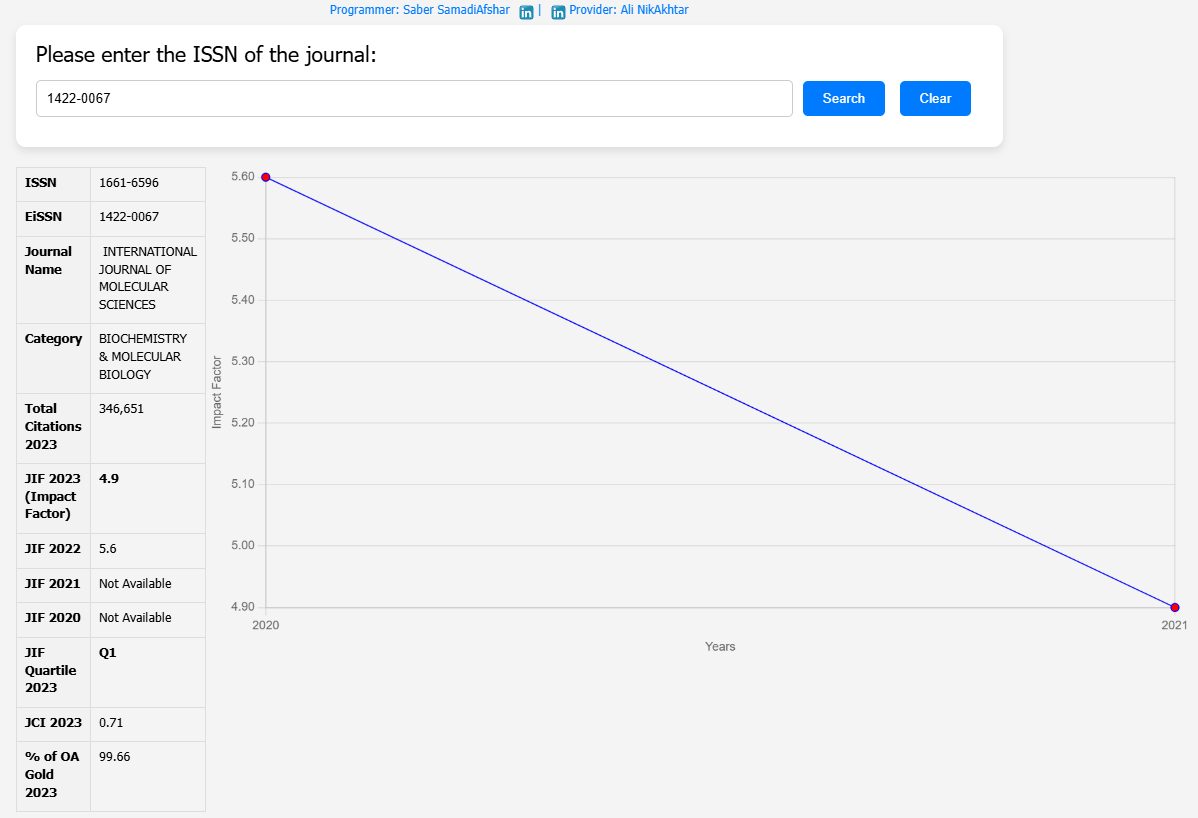Lipophilic Conjugation Enhances ASO Efficacy for Duchenne Muscular Dystrophy
Duchenne muscular dystrophy (DMD) is a severe neuromuscular disorder caused by mutations in the DMD gene, leading to progressive muscle degeneration. Antisense oligonucleotides (ASOs) have emerged as a promising therapeutic strategy through exon skipping to restore functional dystrophin production.
Study Objective
This study investigates the conjugation of ASO targeting exon 51 (ASO 51) with lipophilic compounds, particularly ursodeoxycholic acid (UDCA) and other bile acids, to enhance exon skipping efficiency. Researchers synthesized several ASO-lipid conjugates and evaluated their exon-skipping potency in myogenic cells.
Key Findings
- 5′-UDC-ASO 51 and 5′,3′-bis-UDC-ASO 51 showed significantly higher exon skipping efficiency compared to unconjugated ASO 51.
- The lipophilic modifications facilitated improved uptake and formation of nanoparticle-like aggregates in aqueous media.
- Gymnotic (passive) uptake of lipophilic ASOs demonstrated enhanced cellular delivery.
- 5′-UDC-ASO 51 exhibited optimal exon skipping with full phosphorothioate (PS) linkages, while reducing PS content lowered efficiency.
Conclusion
These results suggest that lipophilic conjugation of ASOs can significantly improve their therapeutic efficacy in DMD by enhancing uptake, stability, and exon skipping potency.

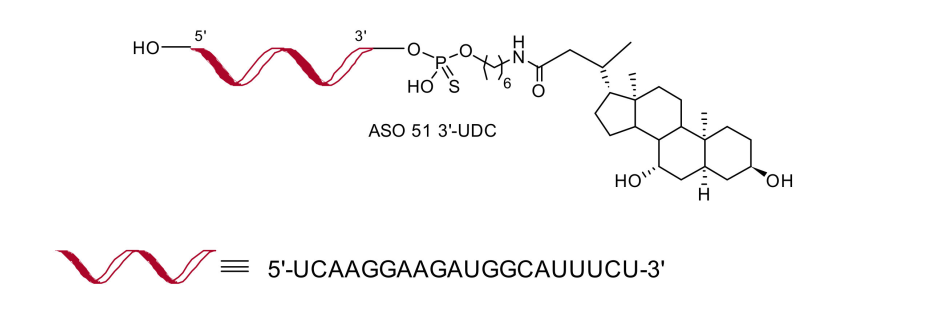


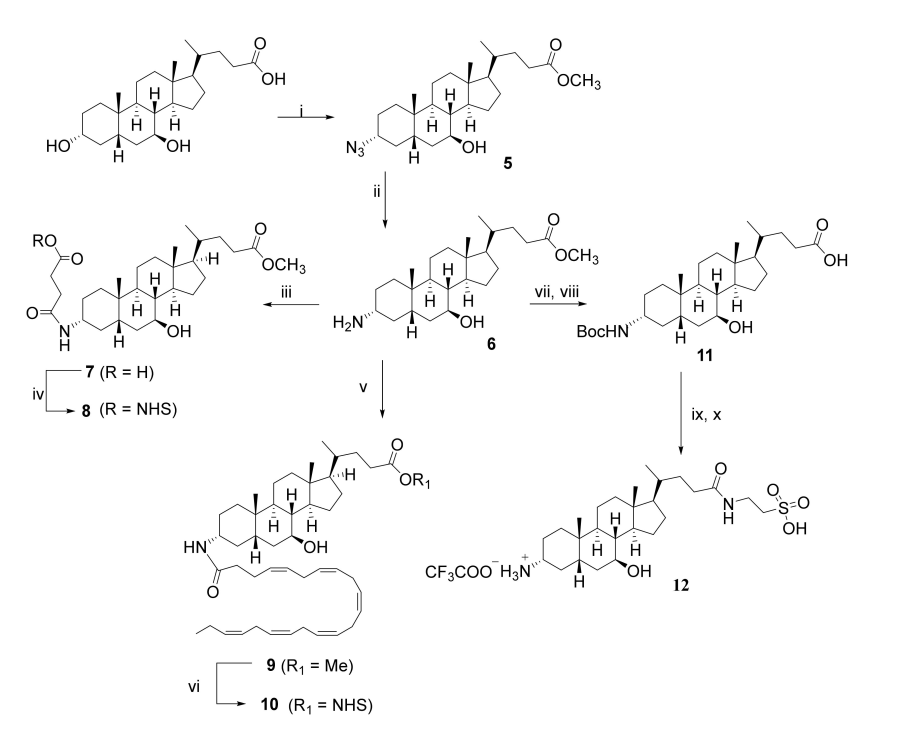

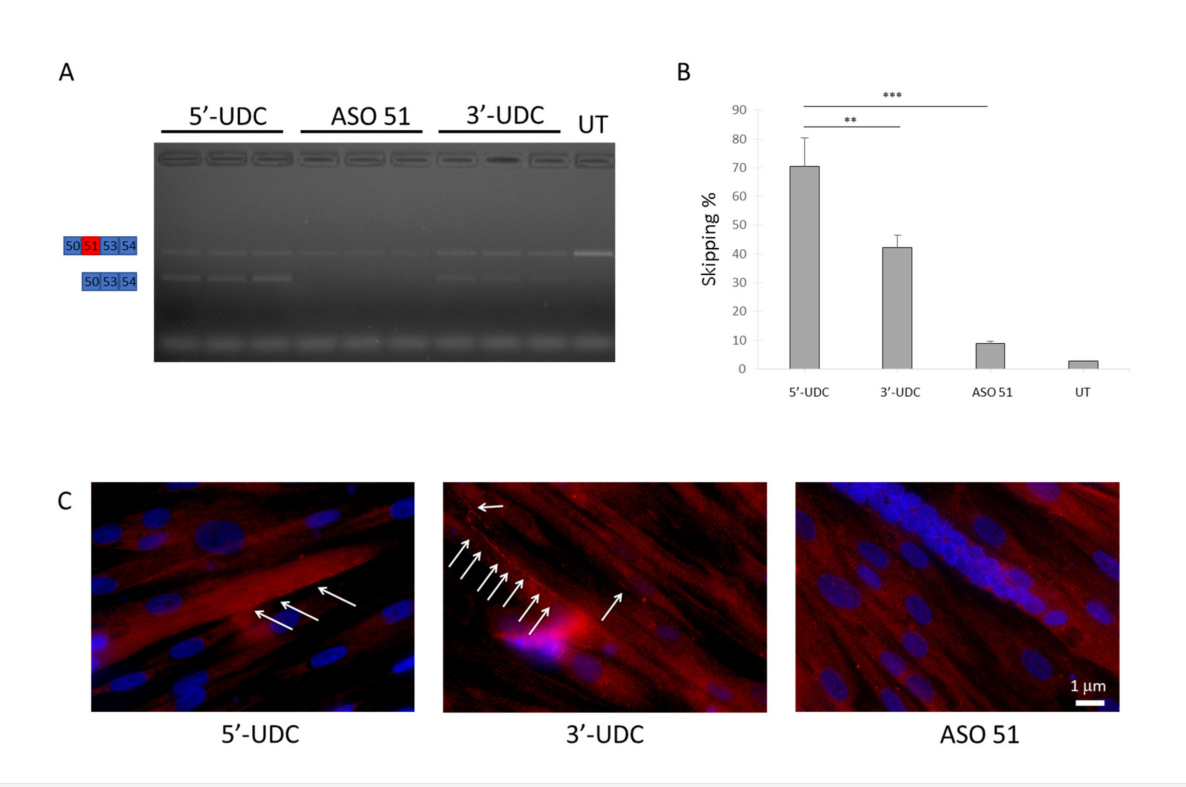
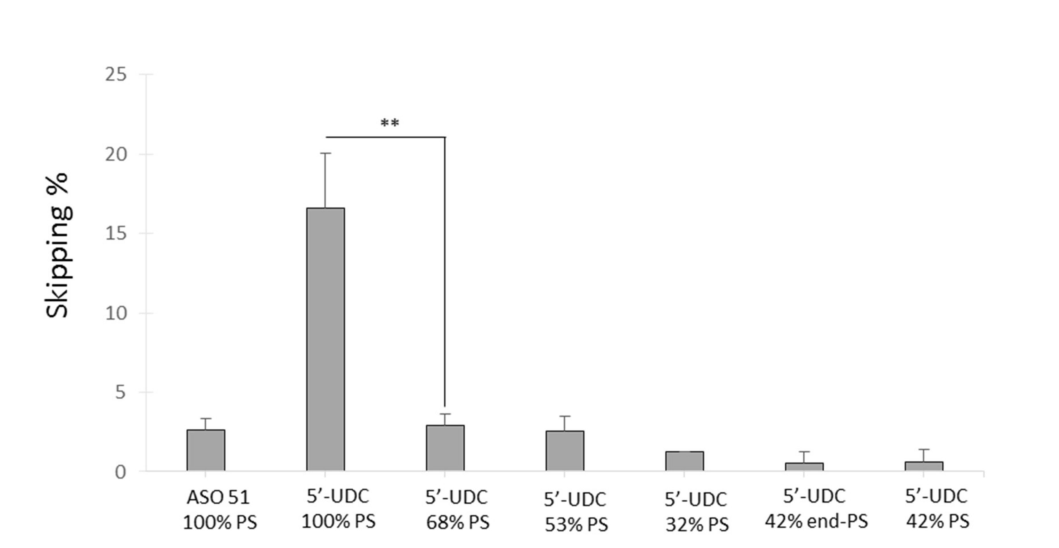
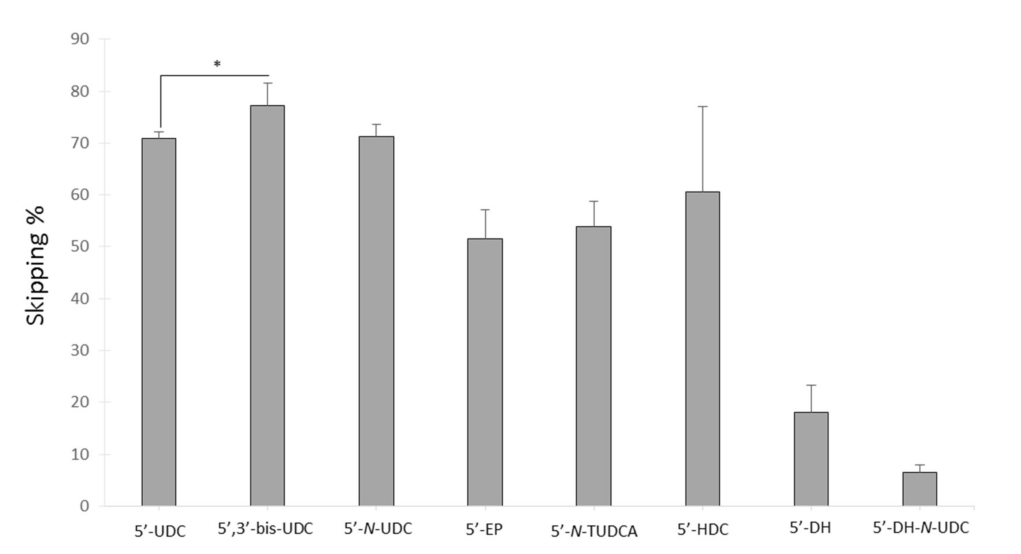
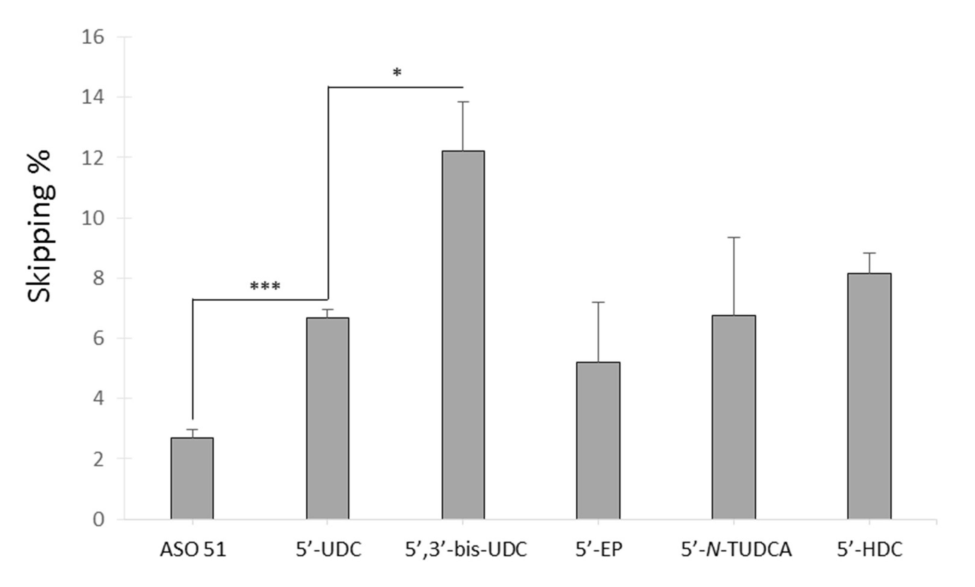





| Field | Details |
| Title | Antisense Oligonucleotides Conjugated with Lipophilic Compounds: Synthesis and In Vitro Evaluation of Exon Skipping in Duchenne Muscular Dystrophy |
| Authors | Elena Marchesi, Rita Cortesi, Lorenzo Preti, Paola Rimessi, Maddalena Sguizzato, Matteo Bovolenta, Daniela Perrone |
| Corresponding Author | Matteo Bovolenta, Daniela Perrone |
| Publication Date | 12-Apr-22 |
| Journal | International Journal of Molecular Sciences |
| Keywords | Duchenne muscular dystrophy, exon skipping, antisense oligonucleotides, lipophilic conjugation, ursodeoxycholic acid |
| Methods Used | Solid-phase synthesis, in vitro exon skipping assay, RT-PCR, Western blot, immunofluorescence analysis, transmission electron microscopy (TEM), photon correlation spectroscopy (PCS) |
| Study Type | Experimental Research |
| DOI | 10.3390/ijms23084270 |
